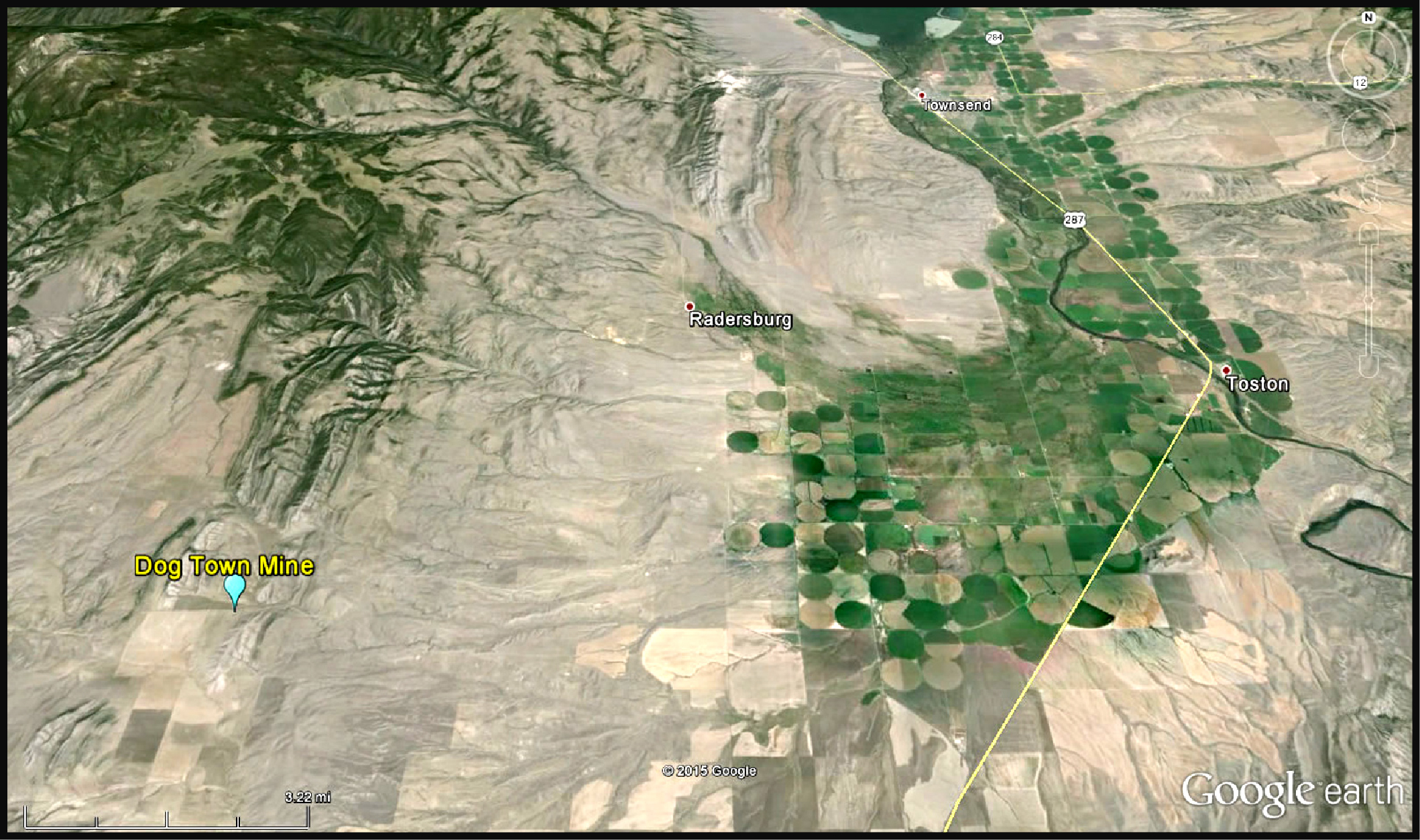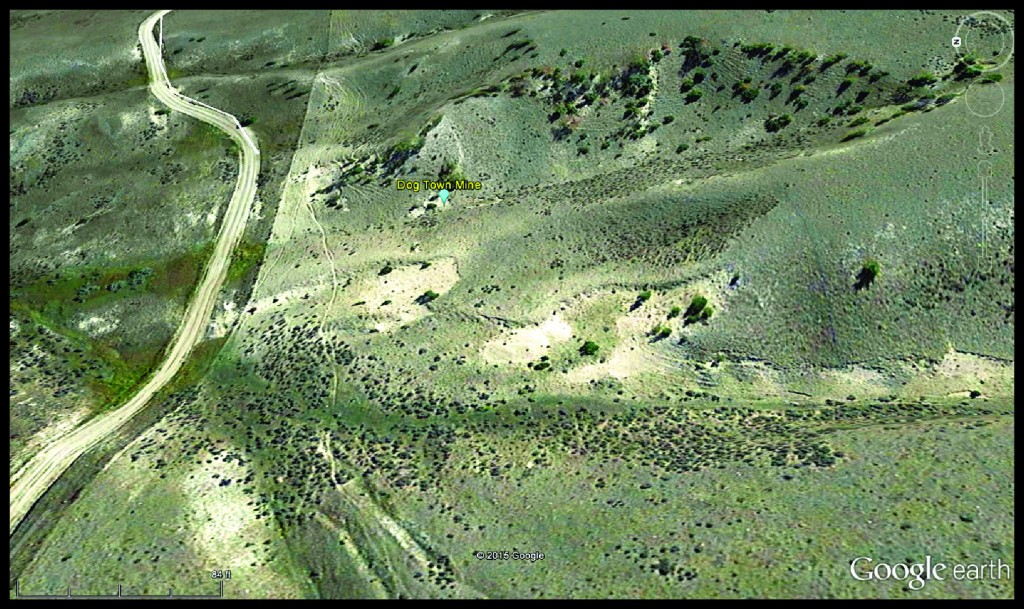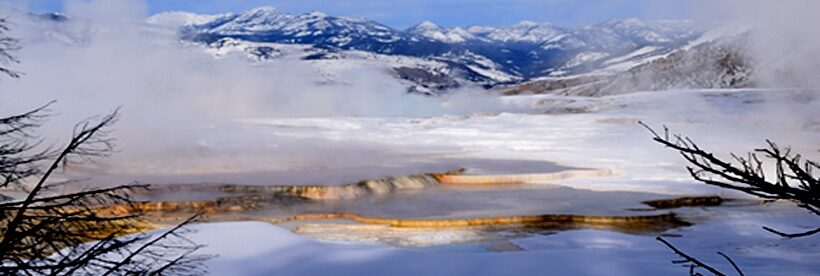
The Dog Town Mine Tertiary fossil vertebrate locality is nestled on private property within the southern extent of the Elkhorn Mountains, southwestern Montana. The locality is about 20 miles southwest of Townsend, Montana, where Mesozoic and Paleozoic carbonate, quartzite, and red-colored mudstone, siltstone, and sandstone rocks underlie Eocene (Chadronian) strata. These unconformable Eocene strata contain the Dog Town Mine vertebrate fossil locality.
Earl Douglass (yes, that Earl Douglass of the Dinosaur National Monument fame) first collected at the site on Friday, June 27, 1902 (based on transcriptions from Earl Douglass’ journals done by Alan Tabrum and volunteers from the Carnegie Museum of Natural History). According to his journal, Douglass met a man from Toston, Montana, on horseback and this person told him about the Dog Town Mine, which was located on the divide between the Toston/Townsend and North Boulder Valleys. Douglass was headed to the North Boulder Valley anyways, so he rode to the mine where he found invertebrate fossils (brachiopods and bryozoa) in carbonate rock which was in contact with the ore deposit. A Mr. Allen, who he dined with that evening, told him that more fossils could be found a little ways west of the mine. After dinner Douglass rode a short way west of the mine and found banks along a ravine that looked like Tertiary White River beds. Here he found “Oreodont, Ischyromys, Palaeolagus, Titanotherium, and turtle remains” (June 28, 1902, Douglass Journal entry). This area is the present Dog Town Mine vertebrate fossil locality.

Tertiary strata at the Dog Town Mine are fine-grained, predominantly consisting of siltstone with minor fine-grained sandstone units. The deposits are probably of aeolian origin, originating from areal sediments rich in volcanic ash. These deposits are probably similar lithologically and in mode of origin to those Tertiary White River units found at high elevations within the Laramie Range and Medicine Bow Mountains (Evanoff, E., 1990, Early Oligocene paleovalleys in southern and central Wyoming: Evidence of high local relief on the late Eocene unconformity: Geology, v. 18, p. 443–446; Lloyd and Eberle, 2012, A late Eocene (Chadronian) mammalian fauna from the White River Formation in Kings Canyon, northern Colorado: Rocky Mountain Geology, v. 47, no. 2, p. 113–132).
Vertebrate fossils have been collected at the Dog Town Mine site for various museums since Douglass’ initial collection. The Carnegie Museum of Natural History in Pittsburgh, PA houses a collection from the site as well as the Museum of the Rockies in Bozeman, MT.
